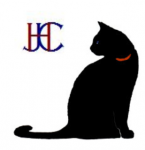For quite some time I had been trying to figure out mystery breathing waveforms like these
Pressure 7/14, resolving by itself

Pressure 12.1 CPAP, terminating in arousal

Pressure 13.4 CPAP, resolving by itself

Pressure 14/16.6, terminating in arousal

which looks very similar to the ones Jay Aitchsee posted here viewtopic/t112758/Mouth-Breathing-mouth ... forms.html but could not be exactly the same, since my mouth was double-taped with Micropore and as much as I try I can't breath through the tape. Indeed the machine reports no leaks.
Just found out a new (Feb 2018) article describing the mechanism how the these waveforms are created. And it would even work with a taped mouth.
"Palatal prolapse as a signature of expiratory flow limitation and inspiratory palatal collapse in patients with obstructive sleep apnea"
https://www.ncbi.nlm.nih.gov/pmc/articles/PMC5915321/
Essentially, in "palatal prolapse", the palate prolapses into the velopharynx during expiration...

...limiting airflow through the nose or shunting it out the mouth (if the mouth is not taped).
The article goal was to create an expiratory flow limitation index (EFLI) to detect the presence of palatal prolapse and did not focus on the treatment implications. When such pattern is detected, signaling expiratory flow limitation, EPAP must be raised. As far as I know, existing auto machines ignore expiratory flow limitation of this kind, naively assuming that if the inspiratory flow limitation is solved so would be any expiratory flow limitation. While mostly true, this does not hold for expiratory palatal prolapse. With a bi-level you can completely zero inspiratory flow limitation with high IPAP keeping the machine happy but still have loe EPAP and occur expiratory flow limitations. Such events may cause arousals (from the article)
I may have to abandon the bi-level modaility and return to CPAP/APAP modality, as EPAP=14 was not enough to fix the palatal prolapse.The movement of the involved floppy tissues (soft palate and uvula) was often quite dramatic and caused arousals.



























